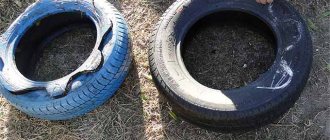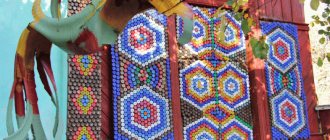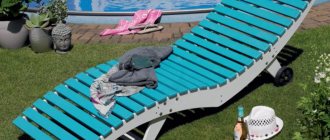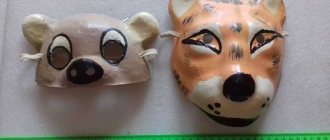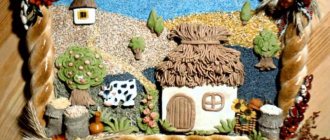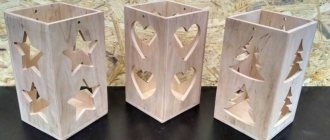Removing the Mollusk
Before you create a beautiful interior element or decoration from them, you need to make sure that there are no shellfish fragments left inside.
To do this, you need to boil the shells, remove the remains of the organism, and then keep the shells in cold water with the addition of part of a chlorine tablet or bleach.
If the sinks have a black coating, or remnants of the natural top layer, you can remove them with a brush. Small sharp chips can be sanded with zero-grit sandpaper.
To reveal the design of the shell and give it a shiny surface, use manicure varnish.
Decorative processing of shells
Clean sinks are matte, in soft shades. You can use them as is, without pre-treatment, to make quick and beautiful DIY shell crafts, or they can be given an extra shine using clear nail polish or furniture varnish. Before this, you should carefully sand all chips, if any, with sandpaper until the surface is smooth.
Drilling holes
To make many crafts, holes must be made in shells.
- For this, drills from 0.8 to 2 mm in diameter installed in a screwdriver are suitable.
- If you don’t have such a tool, you can use a regular needle or a thin nail.
- The steel needle is harder than the shell, so it can also drill a hole.
- To do this, you need to make an initial puncture and carefully drill it out in a circular motion.
- Sometimes shells crack due to this procedure.
- We must not forget that to drill through a thicker shell, a thicker drill is selected.
- Accordingly, the thread and accessories must also be suitable.
- It is better to secure the shell with adhesive tape and drill through it.
All attention to the holes
Beautiful jewelry in master classes for beginners most often involves forming a model by stringing, and for this it is necessary to make holes and cuts on a dense surface. These masterpieces include:
- Spectacular garlands.
- Volumetric beads.
- All kinds of necklaces.
- Wrist bracelets.
The work must be done carefully, because small specimens are quite fragile and can simply fall apart or chip at the most inopportune moment. Sea water constantly ground the surface of the workpiece and made it thin and vulnerable to mechanical stress.
From the editor: Sera fishtamin - Fishtamin: instructions for use
If we talk about the process as a whole, then there is no need to worry; manipulations do not require special knowledge and skills. You need to carefully and slowly carry out the sequence of work, then the shell products will be perfect.
Cowrie bracelet
The shells of these mollusks are so beautiful that they were once used on the islands of Oceania instead of money. If you have such a shell, try making a fashion accessory.
Accessories are sold in textile departments of markets.
You will need:
- Cowries;
- Cord;
- "Floss";
- Beads or large beads;
- End clamps with loops;
- Clasp;
- Split ring;
- Scissors;
- Pliers.
Operating procedure:
- We make holes in the shell at the ends.
- We measure 2 dm of silk cord.
- We pass it through the hole half the length and tie a knot on the outside of the shell.
- We do the same with the second hole.
- We put together several threads of floss of a suitable color, throw them over the cord next to the cowrie, and tie them with a small piece of cord. It turns out to be a brush. For example, in our photo the purple floss tassel is contrasted by the white cowrie, gold beads and blue cord.
- We collect beads or beads to the right and left of the shell.
- We bend the ends of the cord in half and insert them into the clamps. Using pliers we compress the end switches and cut off the excess.
- We attach a ring to one end, and a carabiner to the other. The bracelet is ready!
The music of wind
Small shells can be used to make wind chime crafts. Their chime is pleasant to the ear.
Tools and materials:
- Strong thread;
- Plank or branch;
- Scissors;
- Super glue;
- Drill with drill;
- Small shells.
Step-by-step instruction:
- Tie twine to the branch. Make as many rows of twine as you see fit. Do not forget that to tie shells you need to allow allowances for the length of the cord at the knots.
- If you decide to tie shells, make holes in them in advance. Shells are tied by making a knot around the shell itself, or by making a knot that is larger in size than the hole.
- If you decide to attach the elements with glue, glue the shells to the threads.
- The length of the rows can be even, cut obliquely, longer at the edges, shorter in the middle. You can also alternate the threads along the length, as in our photo.
- When everything is ready, tie a piece of cord to the bar in order to hang the product somewhere.
Preparing shells for work
Before you start doing anything with shells, you should carefully examine and smell them. Yes, yes, just smell it: the fact is that shells are, as you know, the habitat of sea inhabitants, mollusks, which for various reasons left their “home”. However, often there remains a coating of mucus on the internal surfaces (or even particles of the mollusk itself), which, as they decompose, emit a not very pleasant odor, which is better to get rid of.
Cleaning shells
There are three ways to clean shells:
- Apply a solution of “Belizna” containing chlorine in a 1:1 ratio with water and soak shells in it for half an hour or more, in which no shellfish particles were detected. Then clean the shells using, say, an old toothbrush and wash and dry thoroughly.
- The first “thermal” method involves boiling shells for 5 minutes and is suitable for those specimens in which particles of their inhabitants were found inside. Once the shells have cooled a little, it will be much easier to scoop out the contents. Boiling can be replaced by a more “technological” method - frying in the microwave at full power for 30 seconds. up to one minute.
- The second “thermal” is a method in which the internal particles are frozen and then easily removed. To do this, put the shells in a regular plastic bag and place them in the freezer (freezer). After 3-4 days, the shells can be taken out and the contents can be carefully knocked out and scooped out from them. It would be a good idea to wash the thawed shells with soap and dry them.
If you don’t want to bother with cleaning, or if you didn’t realize during your vacation to collect free materials for handicrafts, you can purchase the shells themselves,
Read also DIY wire crafts. What are there, useful tips, examples, photos
as well as all kinds of accessories for creating compositions, in specialized stores focused on materials and tools for needlework. These shells are already cleaned, processed and ready to use, and their surface can be varnished, glittered or painted.
Surface finishing and decor
You can leave the shells “as is”, with a natural surface, which is already beautiful in itself and carries marine energy. In addition, the inside often has a mother-of-pearl coating. In some cases, such “natural” shells are even preferable. However, entire areas of crafts, such as costume jewelry, will require a creative approach to finishing surfaces using the above-mentioned varnishing, glitter coating or painting.
For finishing shell surfaces, any pearlescent or glossy varnish, applied with a regular brush or sprayed from a spray can, will do.
Attention! Any work with aerosols should be carried out in a well-ventilated area, or preferably outside in calm weather. Even if you are not prone to allergic reactions and have healthy respiratory organs, a respirator or simple fabric protection (like a cowboy neckerchief on your face) will not be superfluous. So are rubber gloves.
Acrylic varnish and paints are an excellent, “quick-drying” solution, which is probably preferred by most craftsmen. In addition, glitter can be applied to the varnish that has not yet dried - small colored sparkles in accordance with your creative idea.
If you don’t have anything at hand, you can use nail polishes.
It is quite possible to paint shells with ordinary gouache - this method is especially suitable for unpretentious children's creativity.
Colored permanent markers are also suitable: in general, shells are a very convenient material to work with.
In principle, an originally painted shell in itself can be a complete work and a decorative element, and this is a very good idea, especially for those who know how to draw beautifully.
However, we will move on and look in more detail at prefabricated structures.
Methods for attaching shells
To begin with, I would like to draw your attention to the fact that the variety of shapes and sizes of shells, their durable structure, allow each shell to be used as a separate block of a prefabricated structure. All that remains is to choose the method of attaching them and decide on additional materials.
To connect shells to each other, as well as attach them to the frame in complex (not necessarily difficult) crafts, superglue is most often used in a plastic bottle, which allows you to apply a small, neat drop of glue in the right place. This glue (“Moment” and others like it) will quickly and reliably glue your shells together, just be careful not to get it on your skin or eyes! Also keep in mind that cyanoacrylate vapors are also not good for your health, so make sure the room is well ventilated.
Read also DIY pasta crafts photo
No less convenient and loved by many is hot-melt adhesive in the form of a gun connected to an electrical outlet with a replaceable glue stick. This glue is reliable and quickly sets the parts to be joined, but requires some experience in handling it.
When creating crafts, you will most likely be faced with the need to make a hole in a shell more than once. This is actually not an easy task, since the shells, although strong, are fragile. However, you can make a hole in the desired place on the shell if you first cover its surface with a piece of masking tape. The tape keeps the shell material from cracking, but even in this case you should work extremely carefully. The best tool to use is an engraving machine or a small drill with a drill bit with a diameter of 1-1.5 mm. A sharp nail or other suitable gimlet will do, just don’t rush, do everything very carefully. If the shell does break, do not rush to throw it away: the fragments can be sanded with fine sandpaper and used in your crafts as additional material.
Plasticine works well as an additional material,
salt dough, as well as others, such as colored cardboard, original buttons, beads, threads, etc., even eggshells. More advanced products will require special accessories (rhinestones, chains, all kinds of pendants, etc.), which can be purchased at a craft store.
Shell frame
Even a child can make this simple design element. Most often this is a photo frame. You can use either the natural color of the shells or bring them all to the same color using spray cans.
Required items:
- Frame;
- Shells of any kind;
- Super glue;
- Decorative elements - beads, buttons, ribbons.
Here you need to follow the rule: first, large shells are attached, then the space is filled with smaller shells.
The combination of shells with driftwood - sea-rounded pieces of wood and sea pebbles - looks stylish, as in this photo.
Romantic candles
Sea shells are almost ready-made candlesticks that can be used to create a romantic mood.
Materials for work:
- Large shells;
- Candles in foil (any kind is possible);
- PVA glue.
Step-by-step instruction:
- Remove the candle from the foil and remove the wick by pulling the base at the bottom of the candle. Return the candles to the foil.
- Glue the wick in the center of the shell.
- Melt the paraffin on the stove until liquid and use pliers or tweezers to pour the contents into the shell.
If you are afraid that the paraffin will harden unevenly, first install the shell firmly. After the paraffin has hardened, the candle is ready.
Other jewelry options
You can create very beautiful jewelry from shells, epoxy resin and polymer clay: hair clips, earrings, pendants, boxes. Seashells also serve as an excellent decoration for gift bottles, vases, and dishes.
Shells are one of the most accessible, but at the same time original, materials for creativity. With their help, it will be easy for both adults and children to create crafts that will remind you of clear summer days and give aesthetic pleasure.
Children's crafts from shells
Children usually make appliqués or panels out of shells.
- Fish applique - Scallop shells representing fish are glued onto hard cardboard using glue.
- Turtle Applique – A large scallop can be used to make a sea turtle. The paws and head can be made from suitable shaped green fragments of bottles rounded by the sea, or flat sea pebbles.
In addition, you can make many more beautiful things from shells. Your imagination can be limitless here.
Getting started is easy
It is necessary to prepare the power tool and unwind the carrier; nothing should force you to make unnecessary movements. A drill or screwdriver will do the job perfectly.
They will require thin drills; it is important not to go wrong with the long one. To firmly secure a fragile component on the table, you can use stationery tape; the strip should pass through the location of the future hole and stick to the table, then the chances of success will increase significantly.
Having decided what to make from shells, you can start drilling all the parts; the above tips will help you avoid a lot of waste of workpieces due to defects.
If several copies crumble, do not worry; when working with such components, losses cannot be avoided. Using a hammer and a small nail, pointing and hitting the head with a heavy object will also create a hole.
From the editor: Corridor mesh
